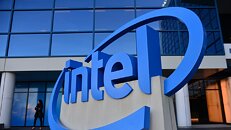Tuesday, March 2nd 2021

Intel Fined 2 Billion USD In Damages For Patent Infringement
A federal jury in Texas has ruled that Intel Corporation violated two patents of VLSI Technology and must pay 2.18 billion USD in damages. The damages include 1.5 billion for one patent and 675 million for the other. The patents are related to clock frequency control and minimum memory operating voltage technique and were awarded to Freescale Semiconductor Inc in 2012 and SigmaTel in 2010. Freescale bought SigmaTel gaining control of the two patents before being passed to NXP after the company acquired Freescale in 2015, these patents were then transferred to the newly resurrected VLSI Technology in 2019 with the sole purpose of launching a legal battle against Intel. In a comment to Tom's Hardware the company said "Intel strongly disagrees with today's jury verdict. We intend to appeal and are confident that we will prevail.". This legal battle will likely drag-out for several years as Intel plans to appeal the recent ruling. Intel recorded a net income of 5.9 billion USD in Q4 2020 so this fine is by no means insignificant.
Source:
Seeking Alpha

62 Comments on Intel Fined 2 Billion USD In Damages For Patent Infringement
Honestly, I think the problem comes from stupid patents being allowed (see for an example www.eff.org/es/taxonomy/term/11344 ), the people at patent offices being way out of their field and approving whatever comes through the door (or being idiots, see patents.google.com/patent/US5443036 ), and in some cases, excessive length of duration (yes, 20 years in tech fields is an eternity, IMO)
Though, I definitely want to see how this ends, it will be interesting to see what Intel has to say.
However
. The patents are related to clock frequency control and minimum memory operating voltage technique and were awarded to Freescale Semiconductor Inc in 2012 and SigmaTel in 2010.
I’m not a chip designer so question how is one supposed to be aware of all the patents out there? Is there some search engine for finding out that kind of stuff?
techrights.org/2017/10/07/ziilabs-vlsi-technology-and-alphacap/
techrights.org/2017/09/30/mpegla-and-fortress/
www.fortress.com/shareholders/news/2017-12-27-softbank-group-completes-acquisition-of-fortress-investment-group
So, basically:
1. Memory size can be controlled by voltage.
Intel designed the Ivy Bridge cache (LLC) in a way that by lowering the voltage to it, less cache was available for use.
2. Related to the one before, but about saving minimum voltage data in non-volatile way.
Intel is saving the minimum voltage for the same cache in SRAM on each Ivy Bridge CPU.
3. Controlling clock speed based on monitoring multiple devices on a bus.
Intel has SpeedShift tech that bases clock speed based on things like core workload.
SpeedShift was added with Skylake and although the complaint does not seem to say that clearly, the infringing part is probably moving that to hardware. Intel had functionally and largely technically similar SpeedStep for a while before that.
By the descriptions in lawsuit the patent system seems pretty broken. Or VLSI is a patent troll in this case.
What is a little suspicious is that the first patent was issued in 2012. Ivy Bridge was launched in that same month.
Second patent is from 2009 and third is from 2010.
Edit:
This makes me curious though, are all the semiconductor companies paying them already or are we waiting for additional lawsuits?
These patents sound simple enough that at least 3rd should be used by pretty much every modern CPU, GPU or *PU really.
Not sure about the first two, maybe nobody does voltage-derived memory sizes but I doubt that is the case.
This isn't fracking copyright law we're talking about, FFS!
Patents last nowhere as long as copyrights.
This is what needs to be done with IP law
1: If said inventor of said IP does not make a product or license the usage of the IP within 5 years containing said IP then the IP is open for free usage by anyone
2: If said IP is instead being Licensed for usage by other companies from said inventor then IP remains owned by the inventor for as long as the IP remains relevant for upto a maximum period of 10 years after which the IP is then open and free for use
"oh sorry engineering we cant use that method, i know the other one uses 20% more power but kevin in korea has a patent"
Now, if they could fix the patent office being so stupid as to allow patents for laser pointing cats, that'd be great.